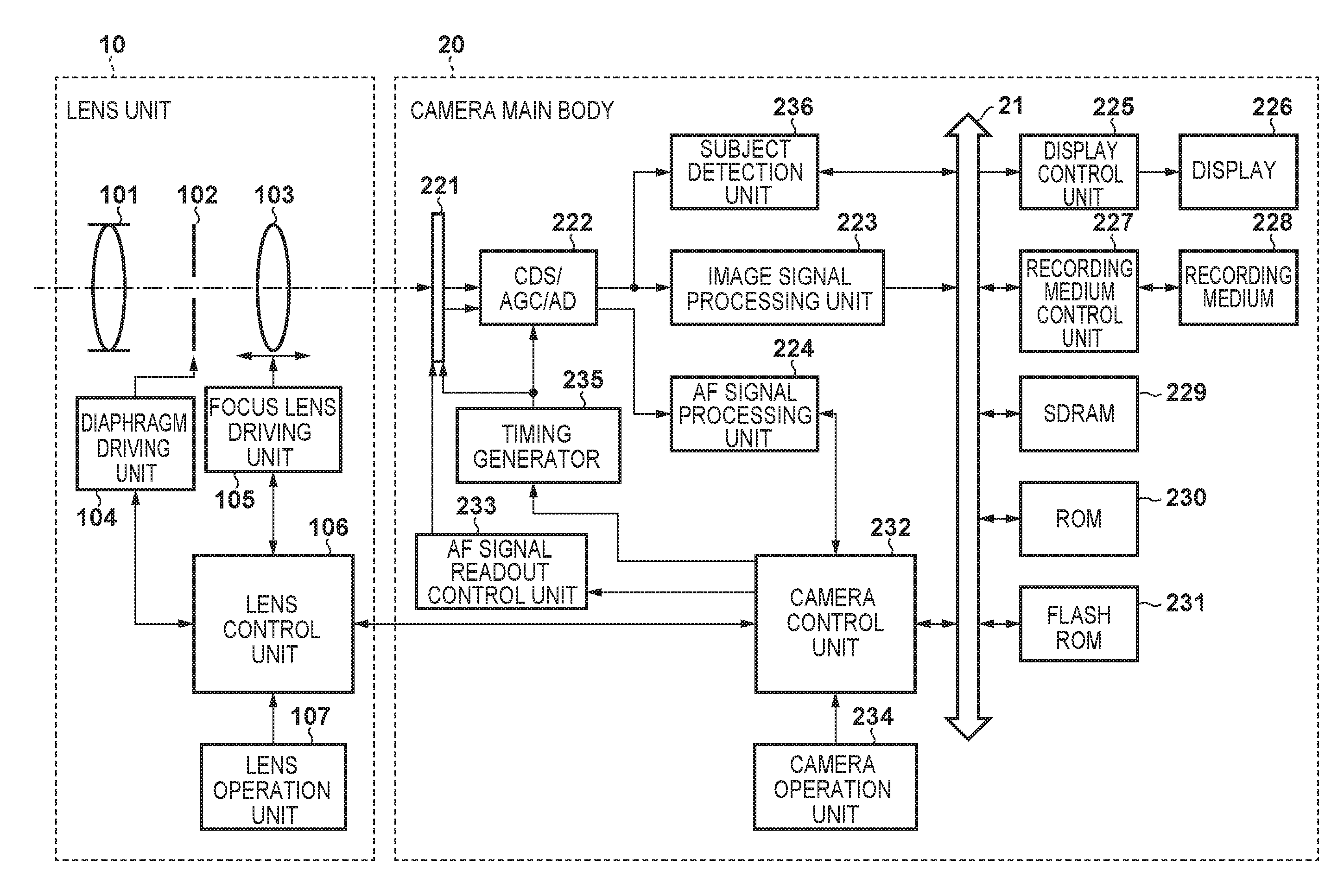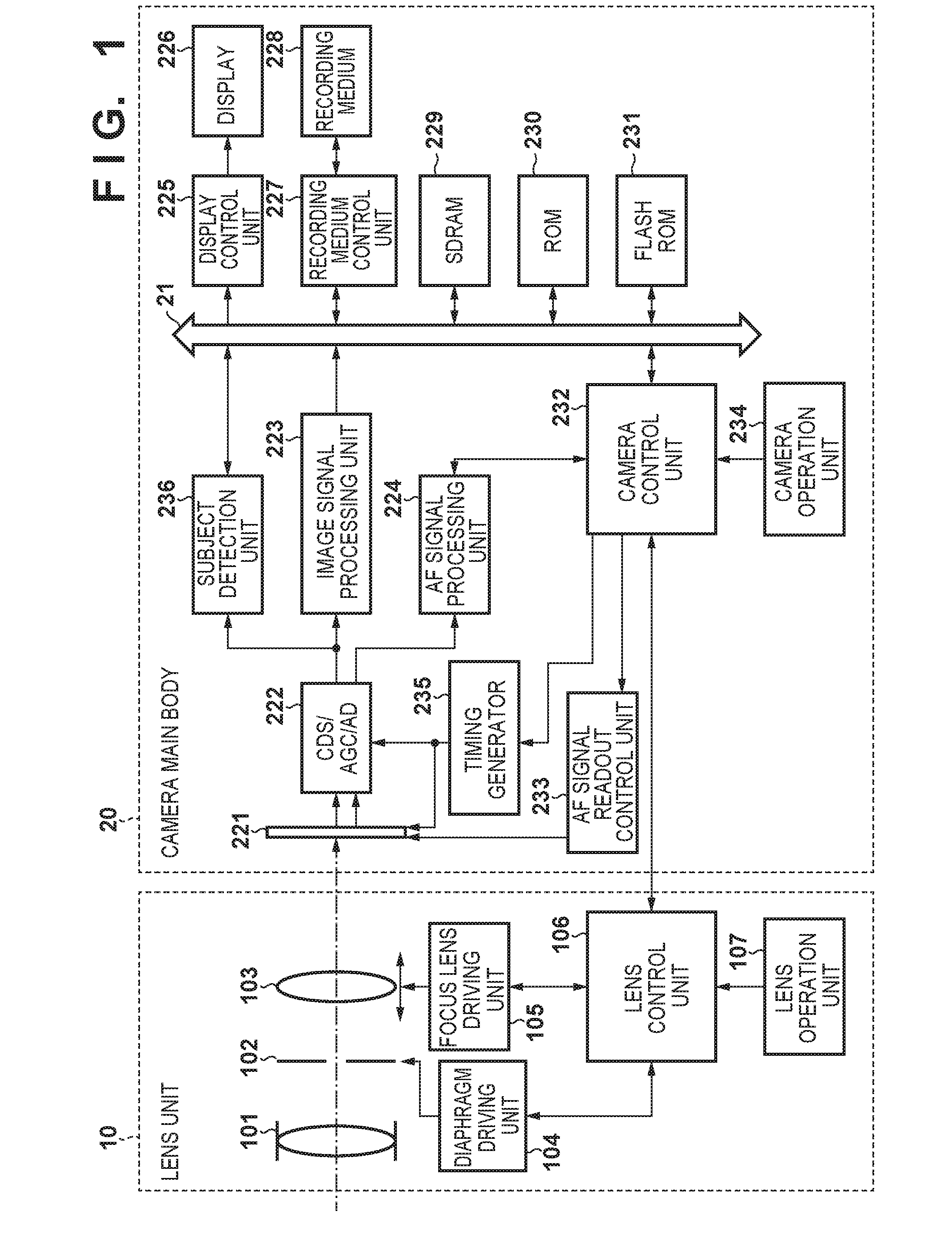Image capturing apparatus and control method of image sensor
a technology of image sensor and capture apparatus, which is applied in the field of image capture apparatus and control method of, can solve the problems of increasing system load, increasing output rate, and increasing the number of output channels, and achieve the effect of reducing system load and energy consumption and not degrading the accuracy of focus detection
- Summary
- Abstract
- Description
- Claims
- Application Information
AI Technical Summary
Benefits of technology
Problems solved by technology
Method used
Image
Examples
first embodiment
Configuration of Image Capturing System
[0028]FIG. 1 is a block diagram showing a schematic configuration of an image capturing system according to a first embodiment of the present invention. In the first embodiment, a lens-exchangeable image capturing system is explained as an example, however, the present invention can be applied to an image capturing system with a fixed lens unit.
[0029]As shown in FIG. 1, the image capturing system of the first embodiment is formed from a lens unit 10 and a camera main body 20. A lens control unit 106 for controlling overall operation of the lens unit 10 and a camera control unit 232 for controlling overall operation of the image capturing system including the lens unit 10 communicates data with each other via a terminal provided on a lens mount.
[0030]First, a structure of the lens unit 10 will be explained. The lens unit 10 includes an imaging optical system formed from a fixed lens 101, a diaphragm 102, a focus lens 103, and so forth. The diaph...
second embodiment
[0062]Next, a description will be given of a second embodiment of the present invention. In the first embodiment as described above, it is explained that, in a case where the subject in a shot image is moving in the horizontal direction, the divided readout is performed every predetermined number of rows. By contrast, in the second embodiment, in a case where an image capturing system moves in the horizontal direction, it is controlled such that the divided readout is performed every predetermined number of rows.
[0063]FIG. 7 is a block diagram of a schematic configuration of an image capturing system according to the second embodiment. FIG. 7 differs from FIG. 1 in the point that a camera main body 20′ further has a camera movement detection unit 701. Other constituents are the same as those described in the first embodiment, the same reference numerals are used, and an explanation of them are omitted.
[0064]The camera movement detection unit 701 is formed from, for example, a known ...
third embodiment
[0071]Next, a description will be given of a third embodiment of the present invention. The image sensor used in the first embodiment can be selectively read out by the divided readout or the added readout in units of rows, by contrast, in the third embodiment, the image sensor can be controlled to be read out by the divided readout or the added readout also in units of columns.
[0072]FIG. 9 shows a configuration of an image sensor 221′ according to the third embodiment. The image sensor 221′ shown in FIG. 9 differs from the image sensor 221 shown in FIG. 2 in that the image sensor 221′ has two horizontal scanning circuits, namely, the first horizontal scanning circuit 208a and the second horizontal scanning circuit 208b. The first horizontal scanning circuit 208a controls the readout circuit 207 such that a signal read out to the readout circuit 207 is sequentially transferred to the output circuit 209. The second horizontal scanning circuit 208b controls the readout circuit 207 suc...
PUM
 Login to View More
Login to View More Abstract
Description
Claims
Application Information
 Login to View More
Login to View More - R&D
- Intellectual Property
- Life Sciences
- Materials
- Tech Scout
- Unparalleled Data Quality
- Higher Quality Content
- 60% Fewer Hallucinations
Browse by: Latest US Patents, China's latest patents, Technical Efficacy Thesaurus, Application Domain, Technology Topic, Popular Technical Reports.
© 2025 PatSnap. All rights reserved.Legal|Privacy policy|Modern Slavery Act Transparency Statement|Sitemap|About US| Contact US: help@patsnap.com



